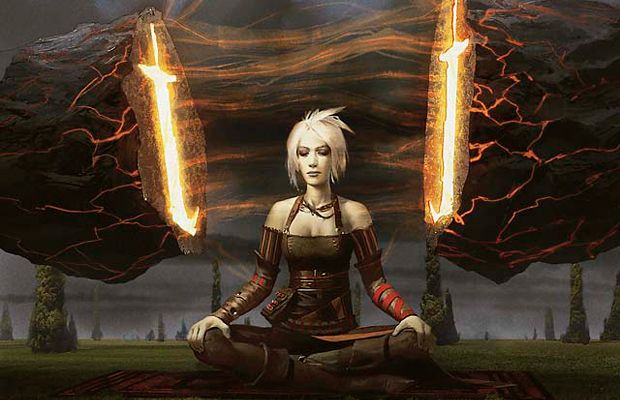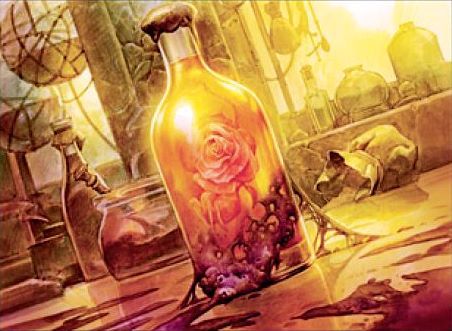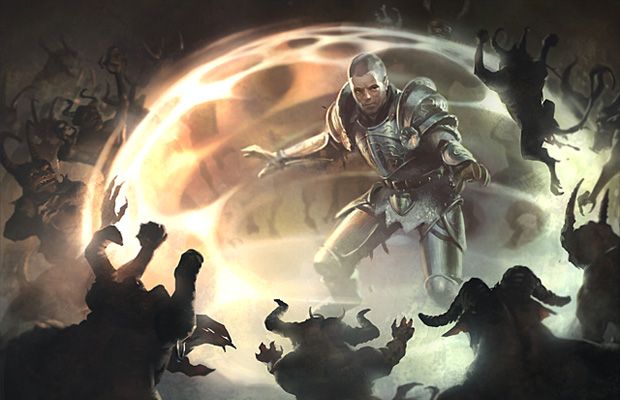
Art by Mike Bierek
Now that I have played an official Legacy event of Magic: the Gathering, I find myself even more interested in this robust format. Specifically, I’m curious about a number of the decks in the format. I saw quite a few at the event, running all sorts of strategies from naked flat-out aggression to well-paced control to insane combinations. I’m not sure which setup is best for me, and I’m looking into a few archtypes to try and determine what will be the most fun for me to play, as well as providing wins.
By no means does this mean I’m done with Light Up The Night. As a low-cost entry into this format, I think it’s still got teeth. It does an obscene amount of damage in a very short amount of time. It may remain my go-to aggro deck for a while, possibly growing into something like Delver or Storm. What follows are some of the other decks I’m looking into; you can click on their titles to read more from the MTG Salvation forums, one of the best resources for deck-building ideas out there.
Remember when I used to disparage net decks? Good times…
Death & Taxes
This is a control deck that I think would throw a lot of people. It’s a mono-white deck that lacks some of the punch of top-tier multi-colored decks, but what it does is rather insidious. It’s various means of battlefield and deck disruption mean it’s incredibly versatile against a great deal of opposing wizards’ tricks. The drawback, other than the obscene price of the Karakas land, is that you need to know both your deck and that of your opponent inside and out, anticipating incoming plays and being prepared for a variety of answers. As I’m still new to the format, it will take a while before I’m at that level of play.
Enchantress
I like decks that don’t necessarily rely on doing a ton of damage out of the gate. Like Death & Taxes, Enchantress seems indicative of versatility. Behind the card-drawing of the two main cards that give the deck its name ([mtg_card]Argothian Enchantress[/mtg_card] & [mtg_card]Enchantress’s Presence[/mtg_card]), any number of enchants can drop to manage the battleground. [mtg_card]Moat[/mtg_card] is the go-to long-term one, but it is expensive. It makes Karakas look like something from a yard sale. However, that may be the biggest hurdle to putting this one together, eventually. I really like the notion of building up a “wall” of shrouded enchantments (meaning my opponents cannot target them), rousing an army of angels thanks to [mtg_card]Sigil of the Empty Throne[/mtg_card] and [mtg_card]Luminarch Ascension[/mtg_card], and offering my opponent an honorable surrender before calling down the avenging wrath of the heavens.
Or something like that.
Stoneblade
This deck combines two things I really like: tokens and equipment. Tokens may not be the crux of the deck, but [mtg_card]Lingering Souls[/mtg_card] is one of my favorite cards. What I like about equipment cards is that they add my beloved versatility to any creature that wields them. Regardless of their role, be it a seeker of cards ([mtg_card]Stoneforge Mystic[/mtg_card]) or the shady voice in your ear ([mtg_card]Dark Confidant[/mtg_card]), they can become a powerhouse with the right equipment. With cards for discarding, enemy deck control, and even the support of the lovely but dangerous [mtg_card]Liliana of the Veil[/mtg_card], this deck gives me the flexibility, interesting plays, and flavor I’m looking for, and no one card is in excess of $100. Bonus!
If you play Legacy, I want to hear from you. What deck do you play? What’s your most difficult matchup? What would you recommend for a newbie like myself?






